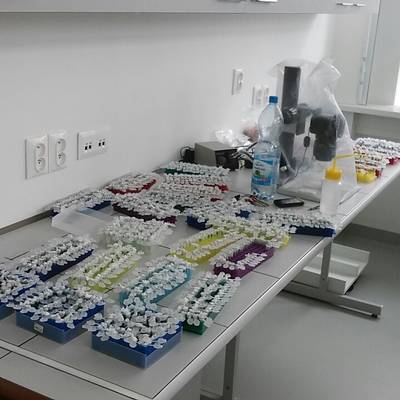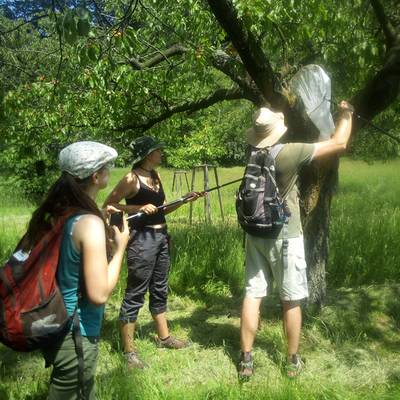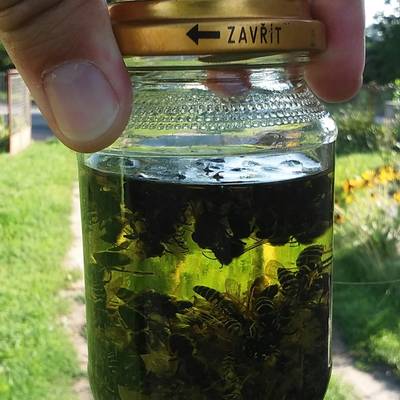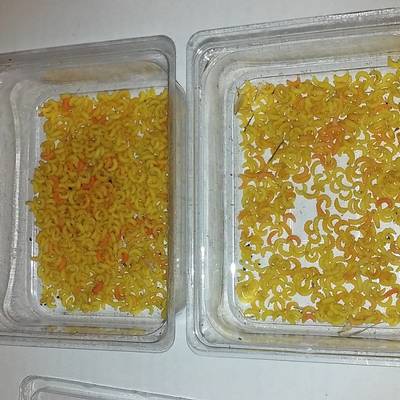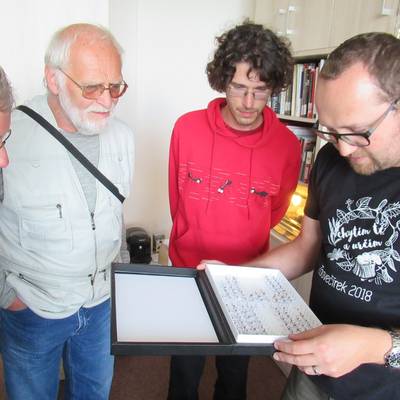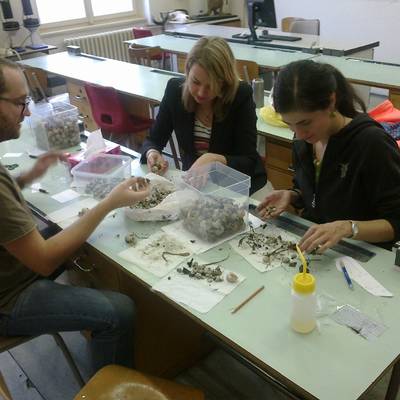Unique research on reed galls and solitary bees has provided many answers, but even more questions
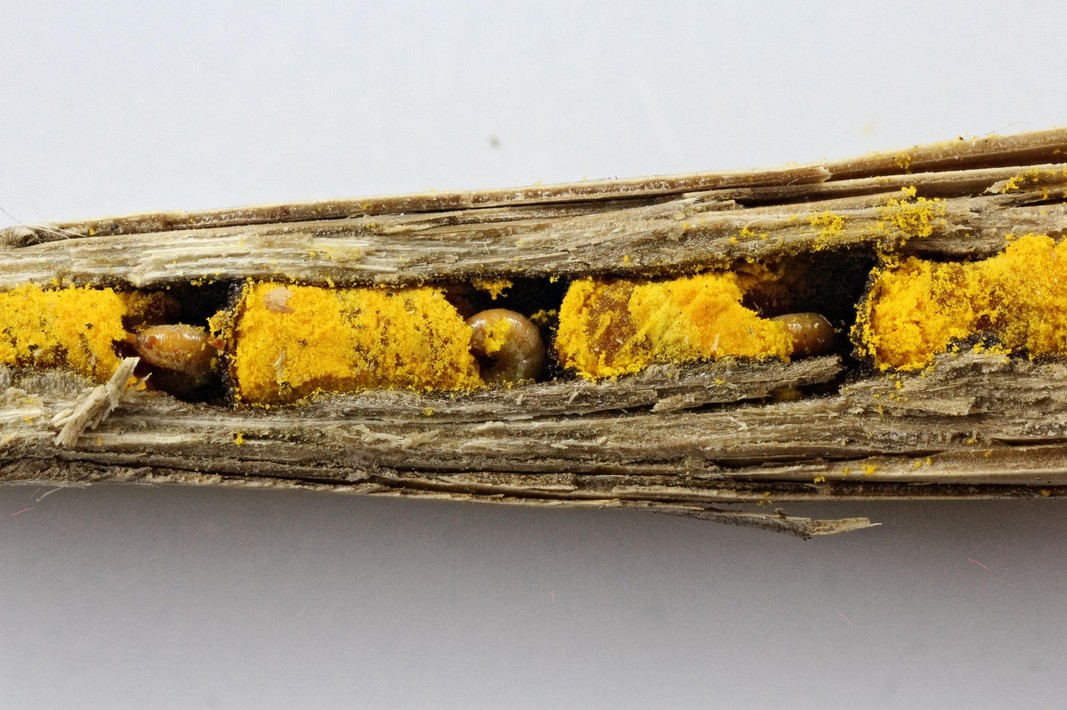
Author: Kristýna Vávrová
“A good piece of research does not just produce answers, but also many questions,” explains Associate Professor Petr Bogusch from the Department of Biology of the Faculty of Science. His research group specialises in solitary wasps and bees that live in so-called galls and it has been looking for answers and asking questions for over a decade.
As the only team specialising in this line of research in the entire world, they have managed to discover several new species, identify new research methods, and propose a new ecosystem of bees.
The research project started in a plastic bottle
Galls are created by chloropid gout-flies, a species of pest fly from the Chloropidae family, which nests in reed stems. Once they hatch, they leave behind an empty cavity called “a gall”. The entrance is masked by leaves but some species can still penetrate inside and use it as their nest. Those species include solitary bees and wasps.
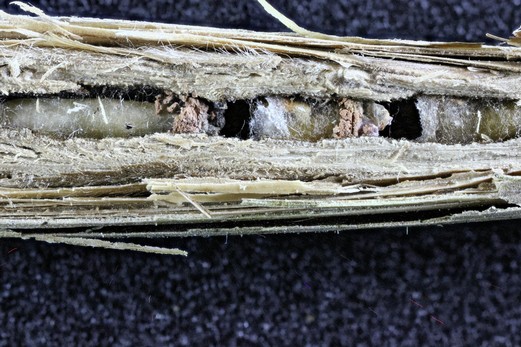
“I enjoy studying topics that are constantly on everyone’s mind but which still remain chronically under-researched. This is how I encountered reed galls ten years ago. At the time, the Hradec Králové Museum conducted a research project using Malaise traps. They installed one of the traps in a bed of reeds next to a local pond. When I was asked to identify the insects, the task proved surprisingly difficult, because I had never seen some of species before, and in some cases only a few specimens were caught in the trap. As I studied the species in more detail, I discovered that they lived in reed galls. All of them were considered rather rare, and some of them weren’t even available in any museum depository. So we tried to collect the galls and hatch the insects to discover what was inside,” Associate Processor Bogusch recollects the beginnings of his research.
At first, the researchers did not know how to hatch the larvae. They sought inspiration from their German colleagues and installed each reed gall in a plastic bottle. The problem was that they had collected over five hundred of them from one location, and there over thirty locations in total. Petr Bogusch therefore designed a hatchery of his own devising, which later got patented as an industrial design.
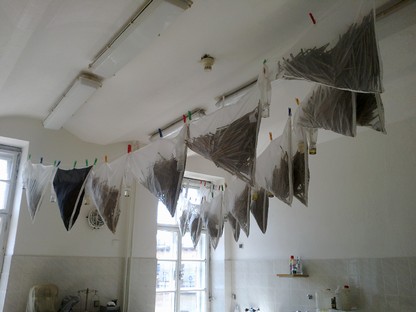
As a consequence, they discovered that many rare species really do live in reed galls and they even managed to identify some that are new to the Czech Republic. Reed gall research also managed to explain the nesting biology of those species – for example their habitat, the design and location of their nests and their sources of food.
Do you dig digger wasps?
The team made a true scientific breakthrough when they studied Pemphredon fabricii, a species of crabronid wasps. “Reed galls are collected in winter when they contain maturing larvae. We wanted to see with our own eyes what they look like during the nesting season and we made a fascinating discovery: the females of P. fabricii feed larvae just before pupation. The interesting thing is that they bring fresh aphids to feed just the smallest larvae at the apex of the nest. This is truly remarkable, we have never seen this type of behaviour in any animal species before,” comments wide-eyed Petr Bogusch.
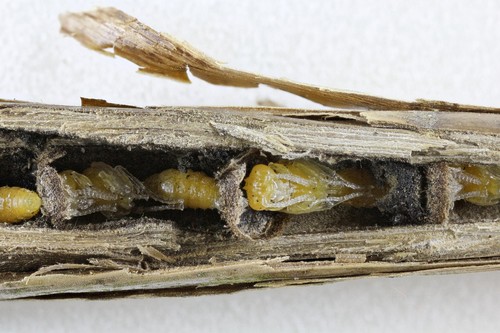
Endangered wetlands and their inhabitants
The beds of reed that form the habitat of gall-loving solitary bees and wasps frequently grow in the open spaces between meadows and ponds or in wetlands and marshes. Regrettably, those are the very areas that have been increasingly endangered by human activity. Many of the species living in galls are recorded in the Czech Red List of Threatened Species. “We often call them ‘indicator species’ since their presence reveals the qualitative status of the wetlands. They keep to marshes that have existed for a long time and that formed naturally. Gall-nesting wasps and bees do not settle for any food, such as the pollen of invasive plants. This may help us designate certain marshes as a nature reserve,“ Mr Bogusch explains the importance of reed gall research for environmental protection, and adds that size does not matter, it’s what you do with it:
“A wet patch of a field might be large enough for bees and wasps from the entire vicinity. Sometimes you can find more protected and rare species there than in a conservation area. There are very few suitable locations available for those species in the cultivated landscape, which is why they concentrate there. In certain locations, the wetlands form an interconnected network of many small marshes, where bees can fly and intermingle freely, and which act as an important source of biodiversity. Regrettably, some local and Government authorities do not quite comprehend the importance of those locations and strive to convert them into agricultural land.”
The reed gall research project has come to a close, but there are still many unanswered questions
“Our reed gall research project is most likely drawing to a close. We are currently starting to focus on the feeding behaviour of solitary bees, specifically where they collect pollen. In our previous research, we frequently encountered the problem that while some of the species are more or less known, the information on them included in books and other sources has not been updated for over a hundred years,” says Petr Bogusch.
The new research project is expected to reveal that various species of Central European bees prefer certain types of pollen. “This type of research is rather time-consuming, we need to travel to museums and collect pollen directly from specimen bees. Our initial paper published on this topic analyses the relationship between pollen and biotope specialisation and the level of endangerment of the species – that is as to whether more specialised species are more threatened than the less specialised ones. The problem we faced was that, so far, bees had not been classified according to their ecological groups. After much pondering and deliberation, we took the liberty of classifying bees into 6 groups that best reflect their environmental needs and which may be used in the protection of landscape, species and nature in general,” the Mr Bogusch continues relentlessly. There is a class available to each species, since bees always tend to incline to one or the other.
“One of the benefits of this classification is that it may help in environment protection planning, and therefore act as a practical instrument. We hope that it will help in the protection of the environment in general, and in the protection of endangered bee and wasp species in particular,” Petr Bogusch describes the broader significance of his team’s research.
Section navigation: Department of Biology


